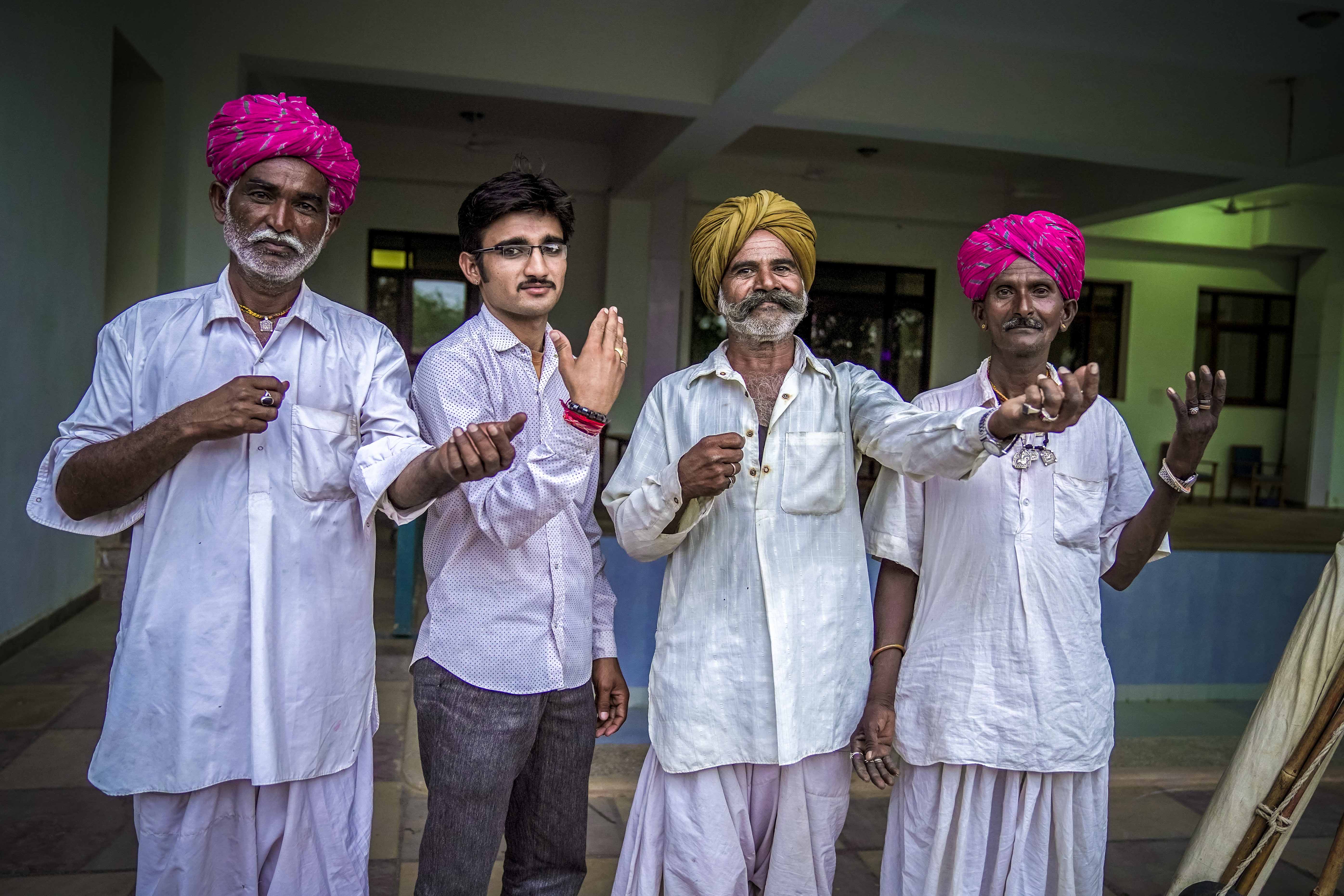
THE VALOUR OF PABU JI RATHOD
A tale of the bravery of the famous legend Pabuji Rathod, presented by the old and the young, in the form of music and dance is an altogether different caravan. Taaza Ram belongs to the Bheel community which is widely comprised of bow men of Rajasthan or the tribals of Mewar. He plays a unique indigenous instrument Raavan-hatta, which he designs and carves on his own with coconut shells and horse hair. This instrument and ‘Pabuji ki Phad’ are the USPs of the Bheel community.
padhaaro jagdamba maata
Goddess Jagdamba, we request you to come
Jogmaya aale
Godess Jogmaaya, come and bless us!
pukaare apko bhopaa
The Bhopa summons you
Jogmaya aale
Godess Jogmaaya, come and bless us!
With a myriad of folk deities being worshipped as a ritual of narrating Pabuji ki Phad, every composition calls to praise and invoke different Gods and Goddesses. The most striking feature of the cult of Pabuji is its principal ritual. Singer-priests (bhopos) of Pābūjī perform a liturgical epic telling of the life, death, and avenging of their hero-god; these performances take place at night, typically in front of a paṛ, a long narrative cloth-painting simultaneously depicting the events of the story and serving as a portable temple to the deity.
The team discovered Lalla Ram Ji just out of sheer coincidence while heading to Bishala. He is an old and impoverished folk musician and belongs to a very poor household in the village. Lalla Ram lives with his wife and children grandchildren has learnt this unique art form from his father and uncle.
He has been performing this ritual for the past thirty-four years. Rajput people invite them for performing on auspicious occasions and even as a means of entertainment. Lalla Ram and his group also give performances on jaagrans. Taaza Ram Ji also works as a farmer and is sometimes compelled to do labour work as well at the time offseason. The season time is a couple of months of July, August. As a child, he was greatly fascinated by the bravery and valour of Pabuji Rathod. It is a renowned legend that Pabuji’s head was cut off when he had gone to rescue the cows from the invaders, but even then he had not stopped fighting. So he decided to carry forward his family heritage of recital of ‘Pabuji ki Phad’. He was also enchanted by the musical melodies produced by Raavan-hatta. So he came to know about a famous Raava-hatta player named Ruparam from Bhadka village. He then learnt to present this religious art form from his Guruji. He also made sure that his children learn to perform this art form.
Pabuji Ki Phad is a religious scroll painting of folk deities, which is used for a musical rendition of the only surviving ancient traditional folk art form, Phad painting in the world of the epic of Pabuji, the Rathod Rajput chief. Bhopas of Pabusar are the bards and also priests who are the traditional narrators of this art form. In villages of Rajasthan, Pabuji was considered an ascetic and hence his blessings were sought for veterinary services provided by his disciples, the Bhopas. This art form is popular in the Indian state of Rajasthan. Pabuji is also known as “the Ascetic Deity of Sand Desert”.
The three basic features associated with this art form are: the epic story of Pabuji, the Rathod chief of Rajasthan in the 14th century, who is extolled as an incarnation of Hindu God, and worshipped by the Rabari tribals of Rajasthan; the Phad or Par, which is a long scroll painting (or sewn) made on cloth, with the martial heroics of Pabuji richly displayed for worship; and the bard priests, known as the Bhopas (who belong to the cult of Pabhuji) of the nomadic tribe of Nayakas and specialists in narrating the story of the Pabuji in their sartorial best through the medium of the Phads used as a portable temple, all over the desert lands of the Thar in Rajasthan.
In villages of Rajasthan, Pabuji was considered an ascetic and hence his blessings were sought for veterinary services provided by his disciples, the Bhopas.
The chanted narration is in colloquial Rajasthani dialect. Bhopa is the main singer (narrator) who does it with an accompaniment of a musical instrument, called the ravanhattha (a desert zither or a spike fiddle with eighteen strings but without frets), which he crafts by himself.
